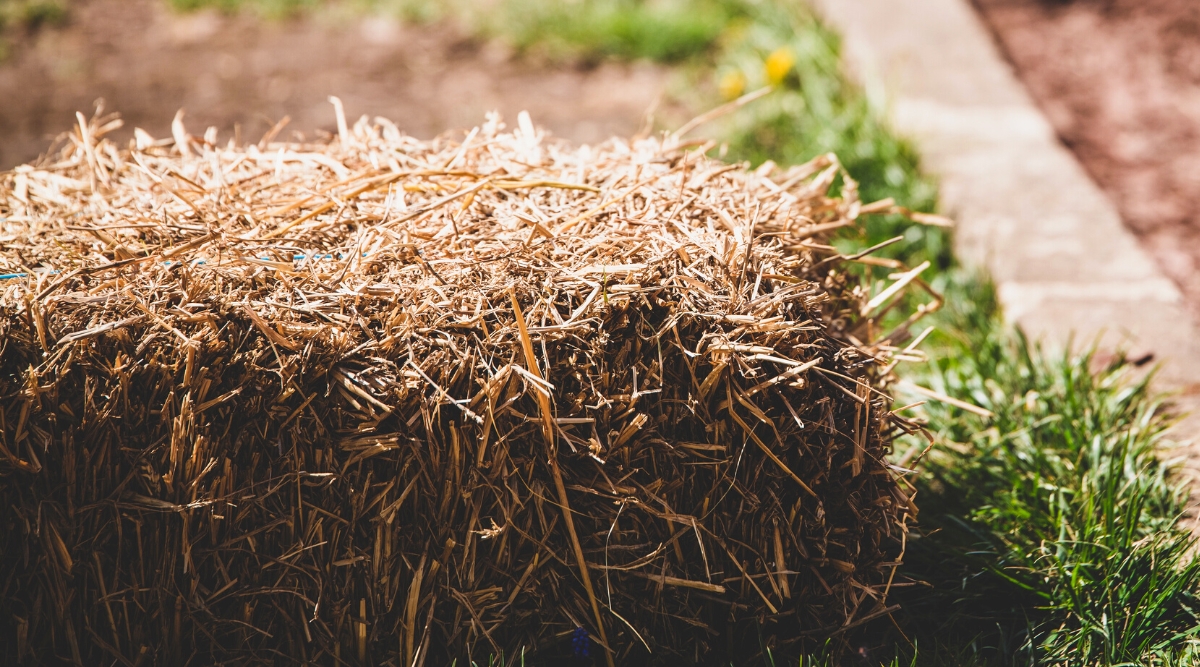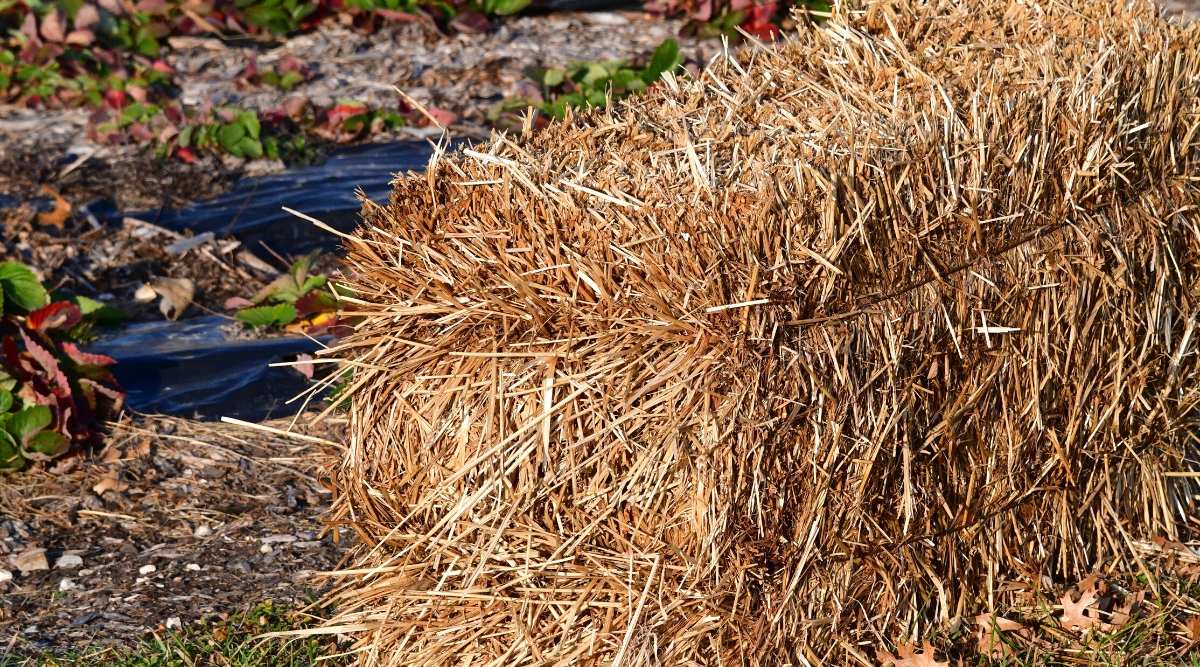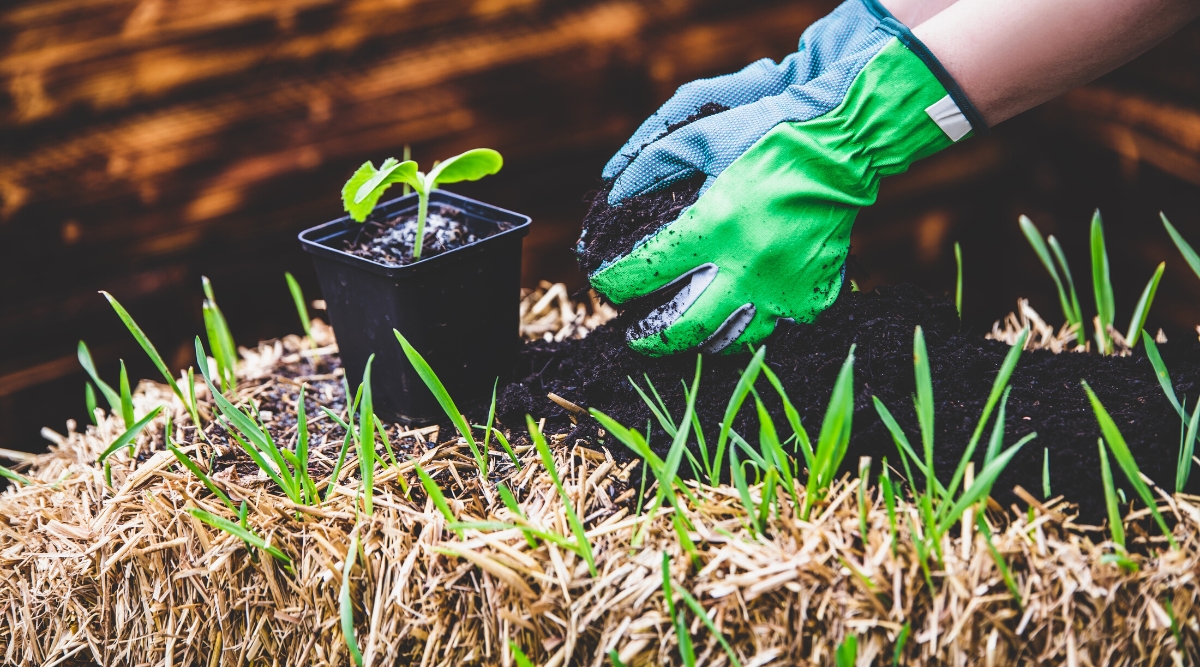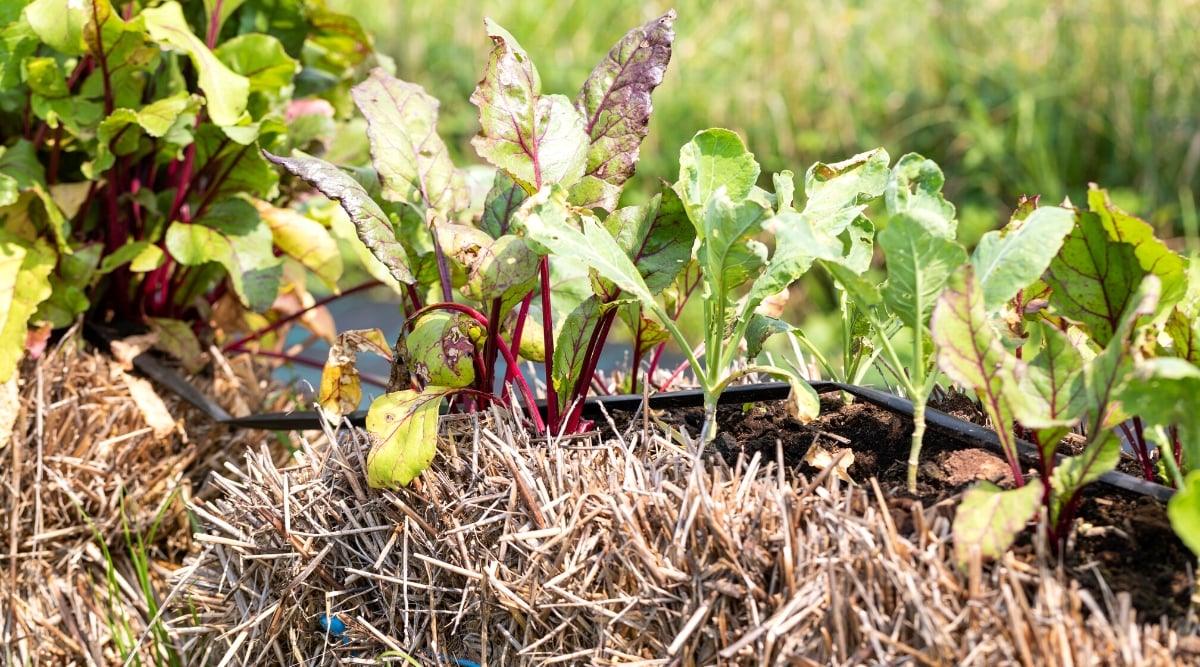Gardening Tips
In horticulture , there are many options for growing plants , include in - ground , containers , raised beds , and hydroponic systems . Why choose to plant in a straw bale garden ? garden expert Kelli Klein deal the benefit of wheat bale gardens and how to build your own !
subject

Why start a husk bale garden ? Well , they have many welfare . Some prefer them because there ’s less grass pressure . Others , because they are low - cost and easy to put together . They ’re also handily portable . If you rent and are working with a temporary garden rather than something more lasting , they are easy to move . They alsomaximize spacein small gardens . Last , the straw decomposes and breaks down over fourth dimension , creating lovingness that can extend your growing time of year .
A little bit of apparatus is required when getting your Basle ready for planting , referred to as “ conditioning . ” Eventually , the straw will break down and will need to be replaced . At most , you’re able to get two season ’ Charles Frederick Worth of function . But overall , it can be aquick and low - cost mode to set up a gardenwithout much upfront investment or recollective - term consignment to the layout .
Verify That The Straw is Herbicide Free
Do not skip this whole tone ! If your bales check herbicides , your garden may flounder or even break down . It ’s also authoritative to find bales specifically from pale yellow rather than hay or alfalfa Basel . Straw is fundamentally the unused portion of commercially grown grains like wheat .
you could verify that the straw is herbicide - detached by communicating like a shot with the source of the drinking straw . If this option is unavailable , however , there are ways to quiz it at home . Plant bean plant life . Since beans are very sensitive to herbicides , you will promptly be able to separate if any are present in your straw . Beans will exhibit deformed or yellow leafage in the presence of weed killer .
Turn the Bale Onto the Narrow Side
Straw bales will come tied in string to keep the bale together . You ’ll want to place the bale with thenarrow side facing up , insure the twine is on the sides and will assist accommodate the bale together .
This will also ensure that the stalk is running vertical to the ground . Since the straw is hollow , this will avail piddle run through the straw as well . It gives less planting space , but the benefits outbalance the loss of quad .
Choosing a Location
Straw bale can be placed anywhere . On a private road , crushed rock , terrace , or any surface will do ! Since this bale is work without grime , the options are unlimited ! Six Bale will compare to the planting space of a four - foot by eight - foot raised seam but will give you even more options when it comes to configuration .
You canplace them in a long quarrel , anL Supreme Headquarters Allied Powers Europe , or akeyhole . As with any possible garden site , you ’ll want to be mindful of how much overall Dominicus the arena meet . Most plants need full sun , which equates to 6 - 8 hour day by day .
When planting into your bale , consider the mature height of your plants . Do n’t place orotund plant life in front of shorter ones and hazard shading them out . If you survive in the Northern Hemisphere , a good rule of pollex is to place taller plant life on the North side of your straw bale garden .

Condition
The bales must be conditioned to jumpstart the decomposition process of the straw . From start to finale , this cognitive process will take two weeks . Then , by the time you plant in them , they will be in a process of decomposition , breaking down around your industrial plant and providing them with the nutrients they need to flourish .
Once the interior of the Basle begins to decompose , you ’re quick for implant . If you plant directly without conditioning , the plant wo n’t be able to access nutrients from the straw as promptly . Without assist , the breakdown unconscious process takes a while .
Soak them with waterusing the sprayer affixation on a hose over the first three days . employ pee - soluble nitrogen - rich plant food over five solar day ( 24-hour interval four to nine ) . Urea fertilizer are the most unremarkably available . Anorganic alternativewould be a blood meal . As blood repast is not weewee - soluble , it will take longer to break down .

The amount of fertilizer you use will look on which fertilizer you practice . For example , if you ’re using a 12 - 0 - 0 blood repast , you will need about 5 pounds per straw bale .
During the decomposition process , the temperature of the bale will rise above 120 degrees Fahrenheit ( this is how you eff it ’s working ! ) This process is similar to the heat discharge by ahot compost pileas it breaks down .
supervise the temperature by stick in a meat thermometer into the side of each bale . During days 10 - 14 , ensure it stick around moist but not soaked . The bale are conditioned when the temperature falls below 100 degree Fahrenheit .

Add a Balanced Fertilizer
After the conditioning essential are met , and you ’ve chosen a fix for your garden , move on to the next step ofadding a balanced fertilizer . Since the straw is fundamentally a clean ticket regarding nutrients , you ’ll have to bestow everything the plant will need to thrive .
Consider the Plant Spacing
When choosing plants , you ’ll want to debate the plant spacing . Since the bales are recollective and narrow , some plant life choices will be just than others .
Plants that conurbation or mature outwards may not be good choices and may crowd each other out . Sturdy , upright plants that do n’t involve much support are great options .
Add Compost and/or Potting Mix
Even though the shuck will dish out as the independent metier for your plants , you will still need toadd some compost and/or potting mixto each Basel to give the roots something to hold onto while they align to their new straw environment .
tear asunder the husk , make a gob more or less bigger than the gage your transplant is currently in , and then press compost and/or potting mixing into the sides of the straw . Then , place your organ transplant into the hole just like you would in a hole in the primer Os raised layer .
Choose Your Plants Wisely
you could grow nearly anything in a straw Basel garden , although sprawling flora like melon , pumpkins , and Cucumis sativus are catchy to contain . base vegetables like carrots , beets , and radishes are possible but also trickier than growing them directly in the territory . Tomatoes , peppers , eggplants , zucchini , potatoes , and spring park are a great place .
Water Well While Plants Get Established
While straw bale are great at holding onto moisture in the midriff , the tops will still dry out during drought or extreme heat , just like a raised seam . While your plant adjust to growing in a new medium , you ’ll want tokeep them well - wateredwhile they get established .
This is especially crucial if spicy ordry weatheris on the horizon . Eventually , the plant life ’s roots will grow down into the inwardness of the bale , where they will be able to get at more wet , but in the beginning , when the roots are near the airfoil of the Basel . Be sure to keep it watered .
Treat Them Like A Raised Bed
At the end of the sidereal day , once you get your straw bale conditioned , fertilized , and constitute out , it ’s very like to growing in a raised bottom . The conflict lie down in the setup and eventual breakdown of the Bale vs.filling a bring up seam with soil .
Placing a bale is less forcible labor than is expect to fill a seam with territory . You ’ll also need to irrigate your bales like water a raised bed . Check regularly to monitor the moisture by sticking your finger into the bale and water as needed .
Don’t Let That Straw Go To Waste!
After the bales have broken down past the full stop of being usable as a planting spiritualist , do n’t fuddle them out just yet ! Since you ’ve spend a deal of time fertilise and encouraging the breakdown of the straw , you have on your hand a verynutrient - richmulchthat you’re able to spreadaround the relief of your garden . Or add together it to a compost bundle and have it break down into beautiful grease to circle throughout your garden .
Final Thoughts
pale yellow bale allow a speedy and easygoing way of life to dress up a garden with a low investment of time and money . That being say , do n’t be afraid to experiment ! While there are ideal conditions and works for using this method , you’re able to also find out creative ways to make matter work . Straw bales are forgiving .
This is a great option for gardener who may only have a irregular growing space or do n’t want to invest in raised beds immediately . The bales allow for flexibleness when find out placement for the garden ( it can be moved at any compass point ! ) . They ’re low - price , or no - cost , if you could find some old 1 up for grabs at a local farm . It might be one of the more unconventional growing methods , but it has benefit .







